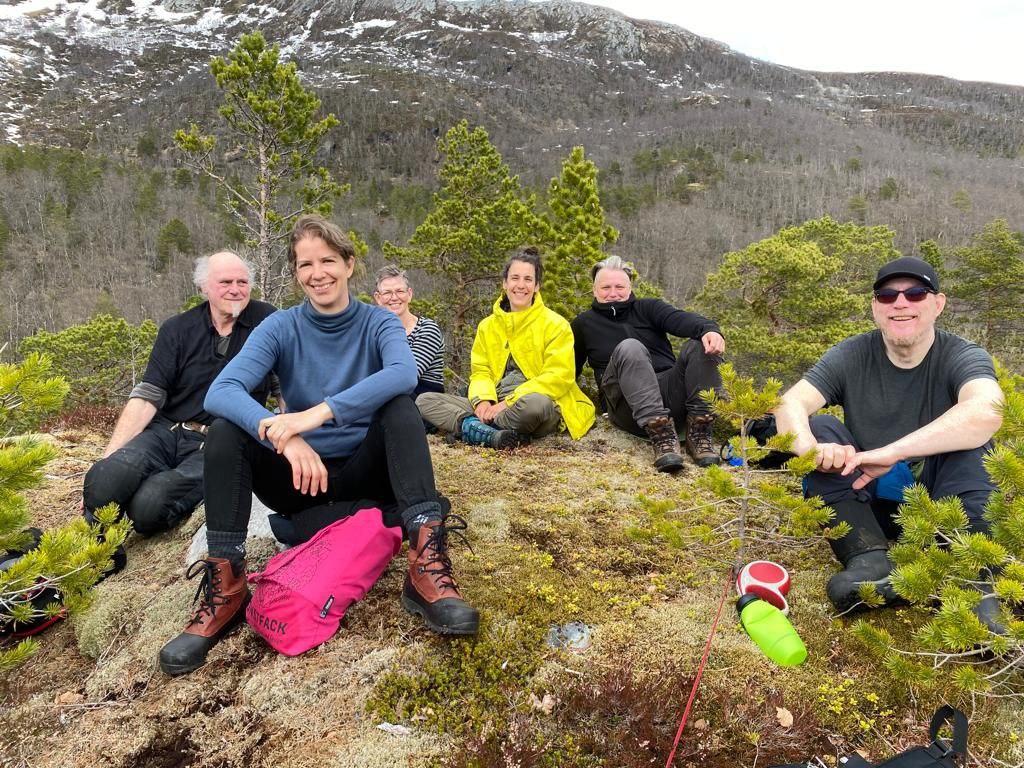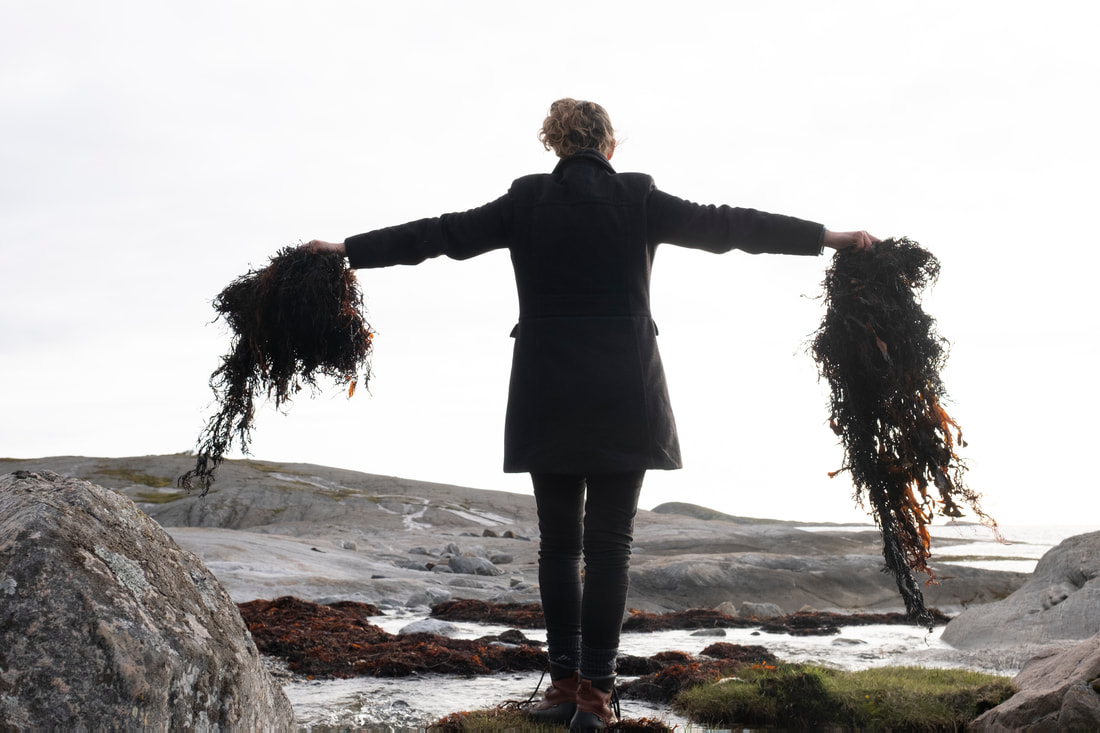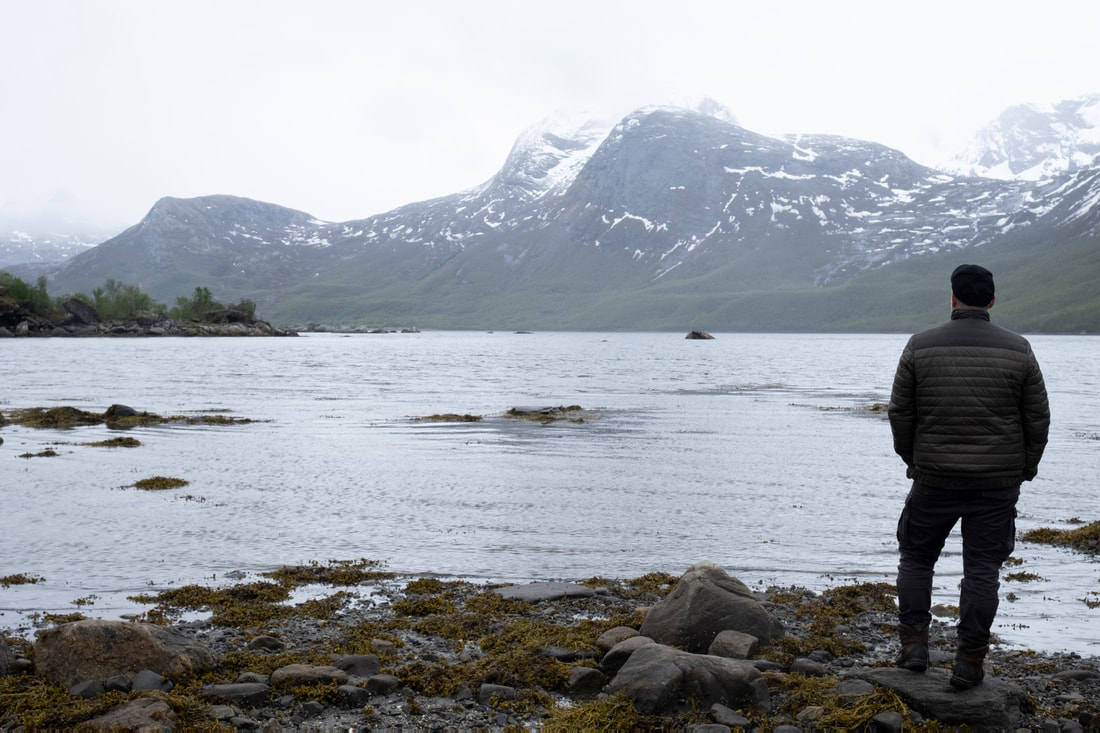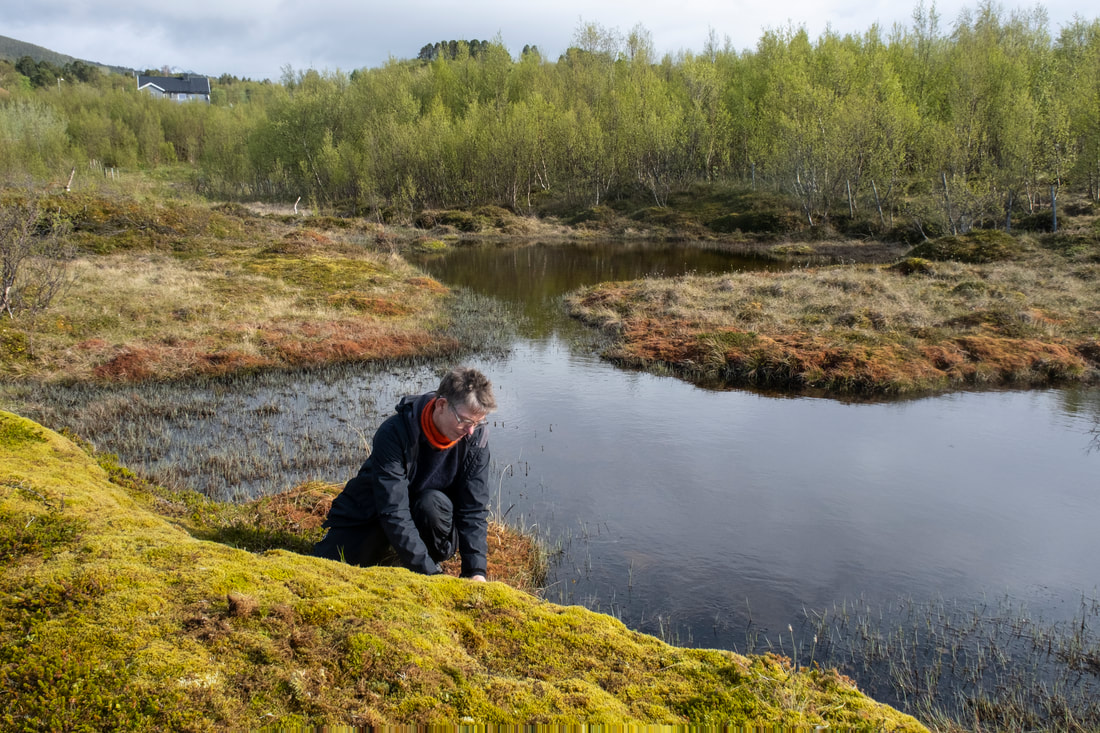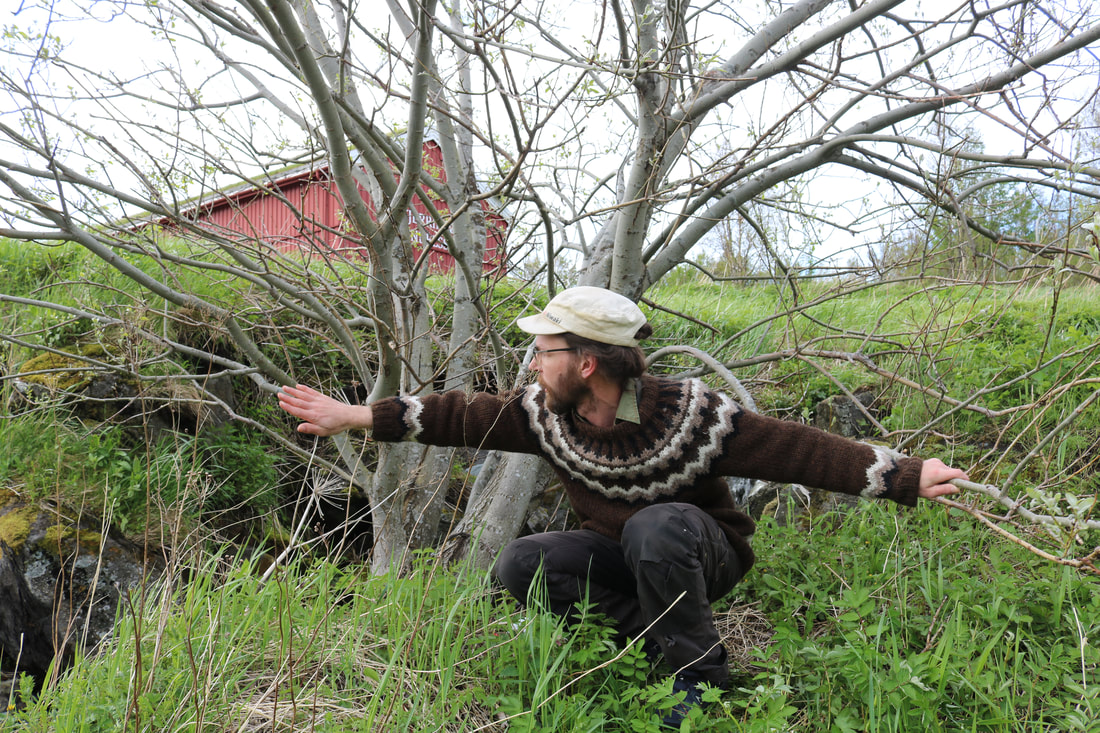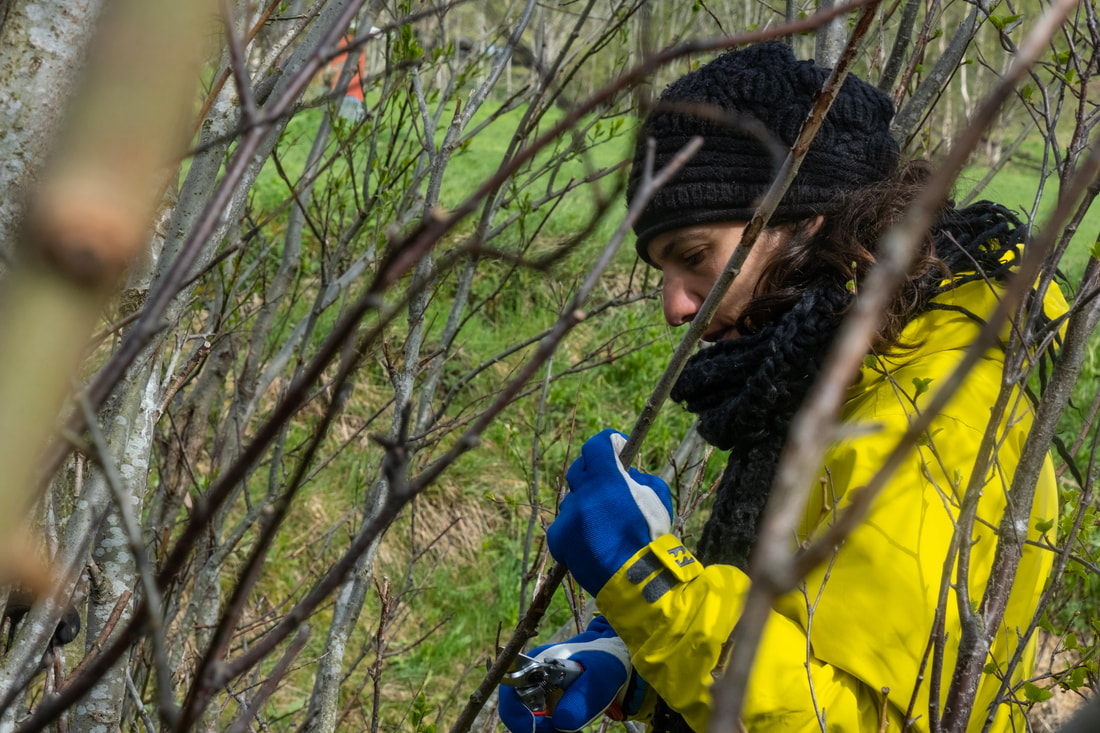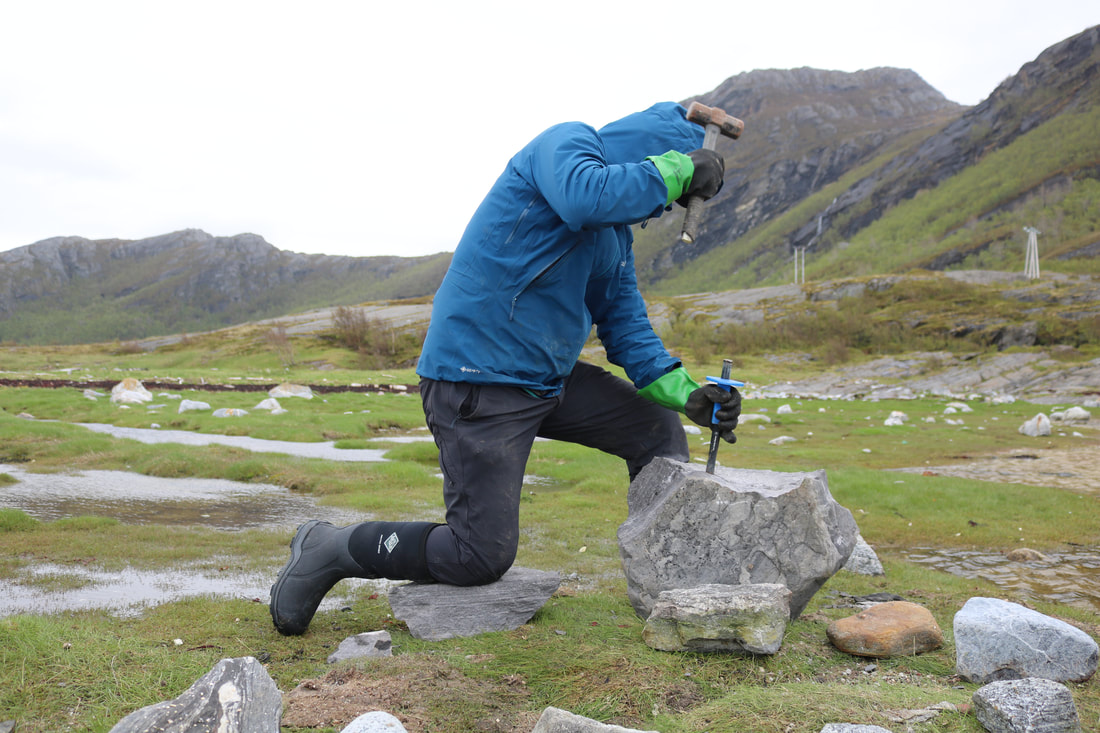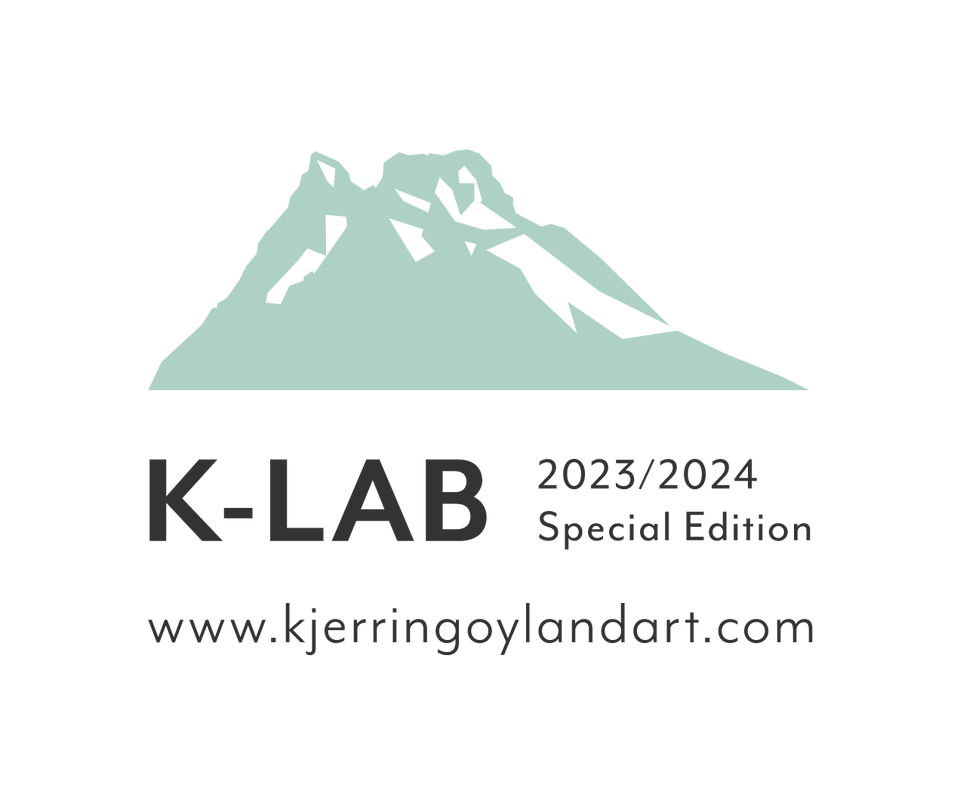Join us for the 9th Kjerringøy Land Art Biennale
2023-2024 Special Edition
Opening July 6th 2024
In 2023, our artists joined us in Kjerringøy to familiarize themselves with the landscape through personal exploration and scheduled workshops. Artists engaged in three workshops about traditional handcrafting techniques using materials sourced from the land and spent half a day out in nature learning about constructing large-scale land art sculptures. This year, the artists will come and stay in Kjerringøy in June to create their artwork with and in nature for the Land Art Biennale, opening July 6th and 7th, starting at kl. 12.00. For these two days, there will be busses running from Bodø to Kjerringøy.
|
Velkommen til Den 9. Kjerringøy Land Art Biennale 2023-2024 Special Edition Åpning 6. juli 2024 |
Join us for The 9th Kjerringøy Land Art Biennale 2023-2024 Special Edition Opening July 6th 2024 |
|
🕓 6.7 kl. 12.00
Utstillingsåpning med nye kunstverk av Kjerringoy Land Art Biennalen 📍 Kjerringøy, oppmøte Kvarven ungdomshus 🕓 7.7 på kl. 12.00 📍 Felles utstillingstur og lunsj på Tverbakk ungdomshus, Nevelsfjord 🗓️ Fra 1.7 - 7.7 Åpent hus med mat, kurs, filmvisninger, og forelesninger. 📍 Kvarven ungdomshus 🗓️ 16.6 - 11.8 🕓 Fredag - Sondag kl. 12 - 16 Prosessutstilling åpningstider 📍Tverbakk ungdomshus, Nevelsfjord, Kjerringøy 🕓 16.6 kl. 14.00 Åpning av Prosessutstilling 📍Tverbakk ungdomshus, Nevelsfjord, Kjerringøy 🕓 11.6 kl. 18.00 Kunstnerpresentasjon 📍Bodø Kunstforening, Moloveien 10, Bodø |
🕓 6.7 at 12.00
Grand Opening of the Kjerringøy Land Art Biennale 📍 Kjerringøy, starting at Kvarven youth house 🕓 7.7 at 12.00 📍 Guided tour and lunch at Tverbakk youth house, Nevelsfjord 🗓️ From 1-7 July Open House with food, courses, film screenings, and lectures. 📍 Kvarven youth house 🗓️ 16.6 - 11.8 🕓 Friday - Sunday 12 - 16 Works in Progress Open Hours 📍Tverbakk youth house, Nevelsfjord, Kjerringøy 🕓 16.6 at 14.00 Opening of "Works in Progress" Exhibition 📍Tverbakk youth house, Nevelsfjord, Kjerringøy 🕓 11.6 at 18.00 Artist Presentations 📍Bodø Kunstforening, Moloveien 10, Bodø |
Meet the Artists
Elin Sundström
Elin Sundström (b. 1975) is a material-based artist living outside Uppsala, Sweden. Her practice is multi-disciplinary and performative using photography, ceramic sculpture, land art and installation, as well as writing. Her work is concerned with the relationship between human and nature, negotiating non-hierarchical ways of relating to the other-than-human. She holds a BFA from HDK, the University College of Design and Crafts, Gothenburg and a MFA from Konstfack, the university of Arts, Craft and Design, Stockholm, and she has participated in various group shows in Sweden. She graduated 2021 from Konstfack with a project that was chosen Favorite of the year by Konsthantverkarna. Exhibitions include Uppsala Art Museum and various group shows in Sweden. Her book River-and-I was published in 2021. In 2022, she received a one-year work grant from the Swedish Art Grants Committee.
A deep care for nature permeates her processes and methods, and much of the work takes place outdoors. She often works site-specific in proximity to water, which holds an important place in her art through its physical and philosophical properties of spreading and thereby binding together species, bodies and landscapes.
Elin Sundström (b. 1975) is a material-based artist living outside Uppsala, Sweden. Her practice is multi-disciplinary and performative using photography, ceramic sculpture, land art and installation, as well as writing. Her work is concerned with the relationship between human and nature, negotiating non-hierarchical ways of relating to the other-than-human. She holds a BFA from HDK, the University College of Design and Crafts, Gothenburg and a MFA from Konstfack, the university of Arts, Craft and Design, Stockholm, and she has participated in various group shows in Sweden. She graduated 2021 from Konstfack with a project that was chosen Favorite of the year by Konsthantverkarna. Exhibitions include Uppsala Art Museum and various group shows in Sweden. Her book River-and-I was published in 2021. In 2022, she received a one-year work grant from the Swedish Art Grants Committee.
A deep care for nature permeates her processes and methods, and much of the work takes place outdoors. She often works site-specific in proximity to water, which holds an important place in her art through its physical and philosophical properties of spreading and thereby binding together species, bodies and landscapes.
Jannik Abel
(b. 1973 in Oslo, lives and works on Nesodden) received her education from the Academy of Fine Arts in San Francisco and her/his/their work has since made a name for itself in the public space, galleries and museums both nationally and internationally. Jannik Abel works in a variety of media and now chooses freely between sculpture, installation, photography, film and performance. Abel transformed his artistry in 2016 into a completely environmentally friendly production, which produces no waste. For the past five years, Abel has been working with fallen trees. "Impossible" strong physical actions have become works of art, created with only manual labor and simple tools such as a saw, knife and axe. Abel's physical capacity transfers a strength of his own to the works. Abel's artwork is the space between "what exists and what "can" exist". What we dream of, what should be?
Justice, equality, freedom and cohesion.
(b. 1973 in Oslo, lives and works on Nesodden) received her education from the Academy of Fine Arts in San Francisco and her/his/their work has since made a name for itself in the public space, galleries and museums both nationally and internationally. Jannik Abel works in a variety of media and now chooses freely between sculpture, installation, photography, film and performance. Abel transformed his artistry in 2016 into a completely environmentally friendly production, which produces no waste. For the past five years, Abel has been working with fallen trees. "Impossible" strong physical actions have become works of art, created with only manual labor and simple tools such as a saw, knife and axe. Abel's physical capacity transfers a strength of his own to the works. Abel's artwork is the space between "what exists and what "can" exist". What we dream of, what should be?
Justice, equality, freedom and cohesion.
Jette Mellgren
(b. 1963) is educated as an archeologist, trained as a basket maker, and works as a visual artist.
During the last 25 years, Jette has had the opportunities to travel and learn by different makers and artists to find her own expression. She works with small objects as well as land art installations. Her practice is based on a personal engagement with landscape, and celebrates and carries an essence of what is experienced in nature. Mellgren's basic approach is to bring out inherent and hidden qualities of nature and its potential as the bearer of a narrative. Trained as a basketmaker, a tradition historically connected to function and use, Mellgren creates work into fancy and
sculptural objects, which far exceeds its conceptual form. Jette works with natural fibers and gathered materials, employing techniques as weaving, stitching and print to create surfaces and structures.
(b. 1963) is educated as an archeologist, trained as a basket maker, and works as a visual artist.
During the last 25 years, Jette has had the opportunities to travel and learn by different makers and artists to find her own expression. She works with small objects as well as land art installations. Her practice is based on a personal engagement with landscape, and celebrates and carries an essence of what is experienced in nature. Mellgren's basic approach is to bring out inherent and hidden qualities of nature and its potential as the bearer of a narrative. Trained as a basketmaker, a tradition historically connected to function and use, Mellgren creates work into fancy and
sculptural objects, which far exceeds its conceptual form. Jette works with natural fibers and gathered materials, employing techniques as weaving, stitching and print to create surfaces and structures.
Kristen Rønnevik
(b.1977, Haugesund, lives and works in Haugesund) works with performance, installation, text,
site-specific and project-oriented/relational art. The working methods he uses are site-specific, circular,
contextual, conceptual, theme- and idea-based. Rønnevik works to create social arenas and meetings between people, nature and the urban landscape. The basic idea is that nature and ecology are the teacher, but the city is the garden, the canvas and the stage where Kristen Rønnevik unfolds his artistic work. He shows in his works how we humans leave traces in nature and in the urban environment, how we as citizens can take greater responsibility and become more aware of these traces, and to listen to a form of inner ethics and morality according to our behavior.
(b.1977, Haugesund, lives and works in Haugesund) works with performance, installation, text,
site-specific and project-oriented/relational art. The working methods he uses are site-specific, circular,
contextual, conceptual, theme- and idea-based. Rønnevik works to create social arenas and meetings between people, nature and the urban landscape. The basic idea is that nature and ecology are the teacher, but the city is the garden, the canvas and the stage where Kristen Rønnevik unfolds his artistic work. He shows in his works how we humans leave traces in nature and in the urban environment, how we as citizens can take greater responsibility and become more aware of these traces, and to listen to a form of inner ethics and morality according to our behavior.
Mar Serinyà Gou
(b.1986, Torroella de Montgrí, Catalonia, Spain) is a visual and performance artist. She holds a PhD in Fine
Arts from the University of Barcelona. She graduated in voice by the Conservatory of Barcelona and with different studies on consciousness of movement and systemic methodology. She has had several exhibitions and performances in various museums, centers and Festivals in national and international territory.
(b.1986, Torroella de Montgrí, Catalonia, Spain) is a visual and performance artist. She holds a PhD in Fine
Arts from the University of Barcelona. She graduated in voice by the Conservatory of Barcelona and with different studies on consciousness of movement and systemic methodology. She has had several exhibitions and performances in various museums, centers and Festivals in national and international territory.
Rainer Fest
(b. 1953 in Berlin) creates artwork that expresses his strong wish that mankind and nature will live in harmony. He often uses symbols that stand for shelter and home; stairs for development, progress; and bridges that stand for longing and overwinding a status quo. These symbols stand in an unworked surrounding on the stone. These symbols reach into a spiritual dimension. Fest likes to work with positive and negative forms, opposites to express his art as the restoration of a Unity that consists of counterparts. Rainer likes the idea that people might find his sculptures unexpected somewhere by chance, in a natural surrounding.
(b. 1953 in Berlin) creates artwork that expresses his strong wish that mankind and nature will live in harmony. He often uses symbols that stand for shelter and home; stairs for development, progress; and bridges that stand for longing and overwinding a status quo. These symbols stand in an unworked surrounding on the stone. These symbols reach into a spiritual dimension. Fest likes to work with positive and negative forms, opposites to express his art as the restoration of a Unity that consists of counterparts. Rainer likes the idea that people might find his sculptures unexpected somewhere by chance, in a natural surrounding.
Ted Efremoff
Ted Efremoff's work deals with issues of displacement, marginalization, and integration. It extends beyond explorations of human societies to the influence humans have on nature. His suspicion is that human creativity is not attached solely to the handle of art, but to ordinary activities that intersect every aspect of our lives. Efremoff is interested in the kind of literal and metaphoric travel through space and time that storytelling allows us to experience. The stories he tells focuses on the creative solutions people find in living their daily lives. He aims to facilitate dialogue and engage people in questioning their relationship to the environmental and political status quo. Spurred by his personal interest in social and environmental justice, Efremoff envisions collaborative activity as an instrument that builds critical relationships between people. While the process of creating for (and with) others is a challenge, it provides a stimulus for discovery and discourse.
Ted Efremoff's work deals with issues of displacement, marginalization, and integration. It extends beyond explorations of human societies to the influence humans have on nature. His suspicion is that human creativity is not attached solely to the handle of art, but to ordinary activities that intersect every aspect of our lives. Efremoff is interested in the kind of literal and metaphoric travel through space and time that storytelling allows us to experience. The stories he tells focuses on the creative solutions people find in living their daily lives. He aims to facilitate dialogue and engage people in questioning their relationship to the environmental and political status quo. Spurred by his personal interest in social and environmental justice, Efremoff envisions collaborative activity as an instrument that builds critical relationships between people. While the process of creating for (and with) others is a challenge, it provides a stimulus for discovery and discourse.
Raffaele Vitto was born in Canosa in Puglia on 15 November 1993. He graduated from the ‘Istituto Statale d'Arte’of
Cerignola in 2013. He holds a Bachelor's Degree in Sculpture in 2017 at the Academy of Fine Arts in Bari, where he is
currently enrolled in a Bachelor's Degree in Sculpture. His work is characterized by the recovery of rural elements
from his own experience, linked to the research dedicated to the object of the environmental space.
Cerignola in 2013. He holds a Bachelor's Degree in Sculpture in 2017 at the Academy of Fine Arts in Bari, where he is
currently enrolled in a Bachelor's Degree in Sculpture. His work is characterized by the recovery of rural elements
from his own experience, linked to the research dedicated to the object of the environmental space.
